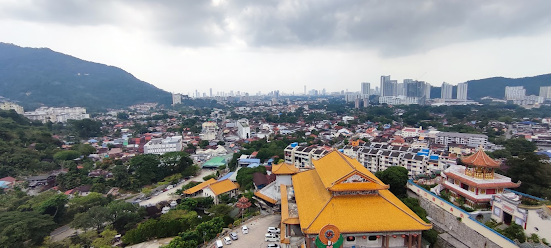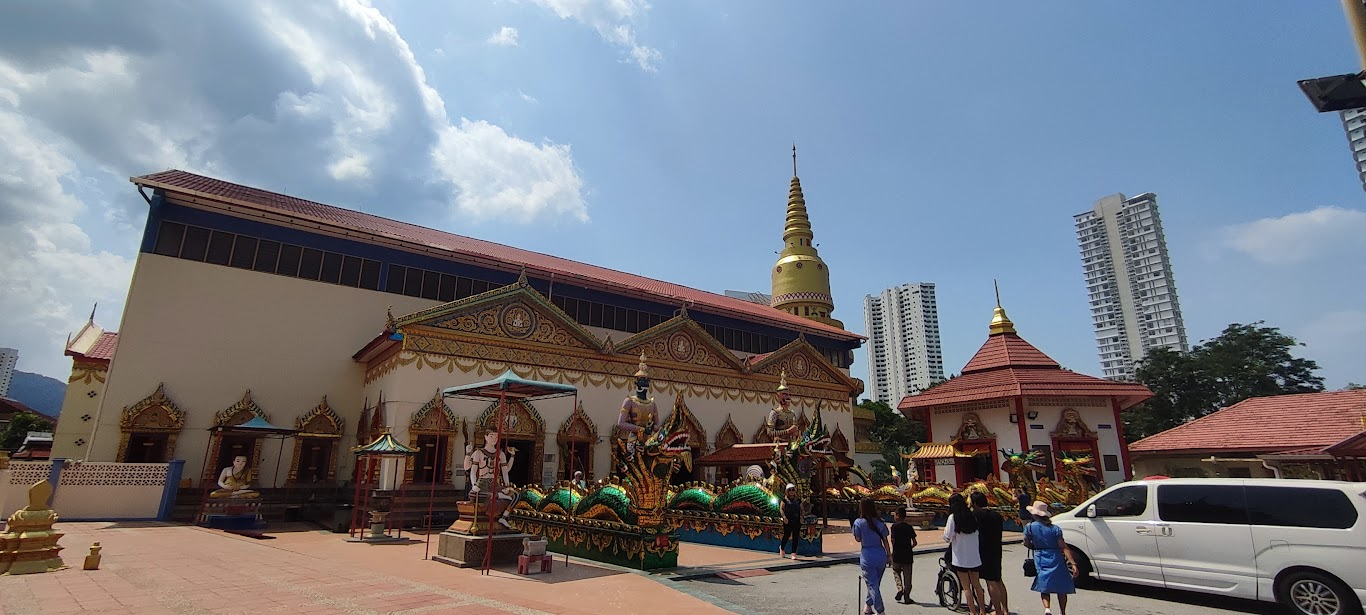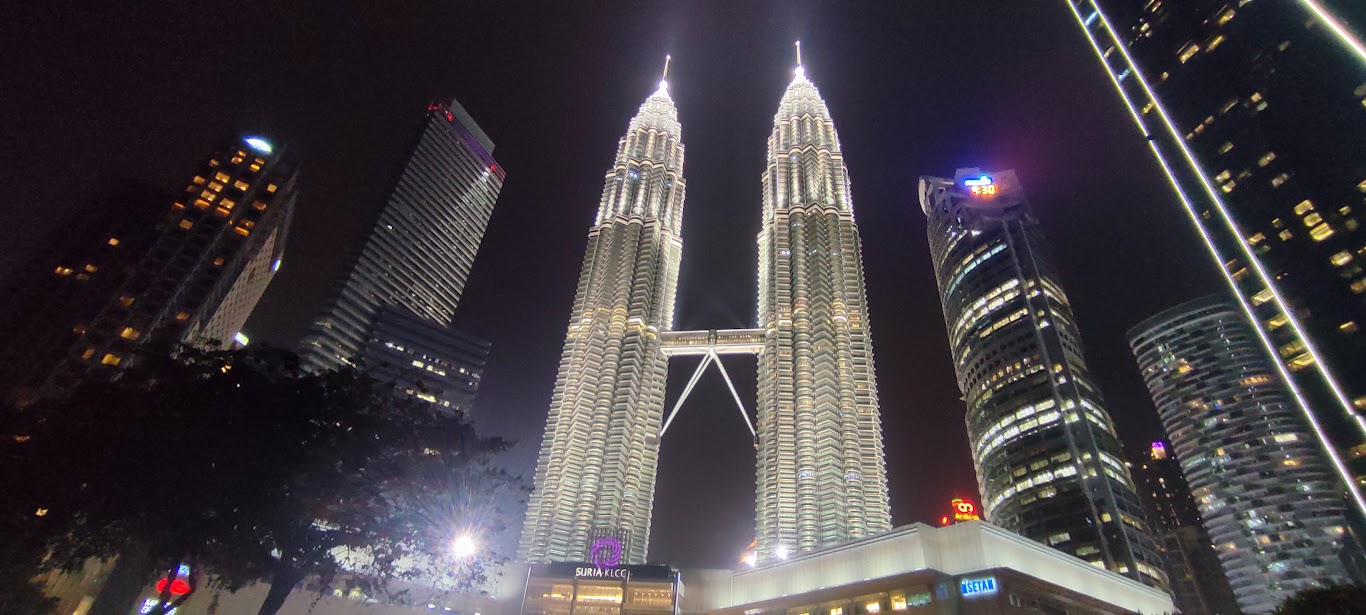Life in a Tropical Island Paradise
So this post is just a kind of a summary of what life is like out here. Hopefully it might inspire some of you to come out to this part of the world if you have never been or haven't been for a while.
I suppose the irony of a post about how great this place is and how people should come and visit, just as we are preparing the process of leaving, is not lost on me, but there we are.
I'm going to be realistic about life here - I believe this is how I've tried to be in all of my posts. Honest, upfront and, if not unbiased, at least aware of my own biases.
It's Hot! Damn hot!
Firstly the most obvious thing is the heat. This will probably be the biggest point of difference between here and the UK and indeed most of Europe. I know we have had heat waves and there were points in the summer when the temperature in parts of the UK exceeded that of Penang, but this is unusual and time limited weather. Here the heat is a constant.
The most significant thing about the heat is the lack of variation and the humidity. The temperature range here in Penang is no more than 11 degrees and the biggest variations tend only to be around 5 o 6 degrees Celsius. The night time low is around 24-26 and the day time high around 29-32. At the moment we are hitting highs of 35 and it feels much warmer in direct sunlight.
The humidity is a constant and combined with the heat - boy do you sweat! It's not not a prepossessing image nor a pleasant one, but you will be constantly damp and you are lucky if you can wear the same piece of clothing for more than a single day (I have been known to change T-shirts and shorts several times a day depending on what we are doing).
The 'wet bulb' temperature and the 'feels like' temperature are all ridiculously high too. When the temperature is at 33 degrees here it has a feels like temperature of 45! That's insane. I was wondering why I was struggling to run any significant distance in this and now I know why.
The average temperature range in Newcastle.
The average temperature range in Penang.
(I'm not convinced I've ever seen the temperature drop to 22 degrees outside of the Cameron Highlands)
Constant humidity!
I still can't wrap my head around water temperatures that are hotter than the air temperature is in my home country - during the summer! Madness!
The Physical Environment
The environment in general is a very different one. Even if you have experienced hot European climates, they feel different. Heat in Spain and Southern France feels more arid and the general environment conforms to this. The overriding sense memory I have of both Mallorca and Andora in the heat is the smell of hot pine.
Here the smell is heavy with dampness and often decay - it is background note, but frequently there. When in the tropical forests the smell changes and is perfumed and heady, rather than the sharp notes of pine.
The visuals too are very different. The hills are almost all clad in dense forest, back home in Northumberland the hills are much more open and the landscapes reveal themselves. When hiking in the tropics your view is frequently limited to the undergrowth surrounding you.
Gratuitous tropical forest shot
The urban environment is very different too. It can be well planned and pedestrian friendly, but this is usually by accident rather than design. Malaysia is one of the most urbanised countries in South East Asia, and with an urban population of about 78% it is ahead of Germany in terms of urbanisation and only a little behind the UK. However this process has occurred in the space of the last 60 years, unlike many of the more well established industrialised and urbanised countries which have had this pattern of settlement for the last couple of centuries. This has led to some interesting consequences and the urban environments are therefore very different to back home in the UK.
Here you can see traditional Kampung houses, low rise apartments and in the distance the glass and steel skyscrapers of modern Malaysia.
Here's a good illustration - this traditional Hindu temple is nestled between two modern glass, steel and concrete malls.
This combination makes life here fascinating on a visual level as well as several other levels too. Walking around the urban areas of Penang and KL are interesting experiences just from this perspective.
It's not just the urban and arboreal environments that are different - the physical geography of the landscape is like nothing I've ever experienced. Peninsular Malaysia is mountainous. A range of mountains runs down the spine of the country all the way down as far South as Malacca before giving way to the more open plains of the southern tip of the peninsular. These mountains are home to several large lakes; multiple national parks; the Cameron and Genting Highlands and they dominate the skyline in the distance when we look out across the Straights of Malacca to the mainland. There are also huge limestone islands dotted throughout the flatter lands - strange isolated outcroppings that were clearly part of some larger geological features at some point and now stand towering over their surroundings. Many of these are untouched, many have cave temples built into them and some are quarried for building materials.
All in all, Malaysia looks like no other country I have visited
The outside of a cave temple in Ipoh
An interior shot of the Batu caves in KL - I don't think either shot really captures the scale of the subjects.
The specific geography of Penang is interesting - it is kind of like a microcosm of Malaysia in general - in fact I'd go so far as to suggest that it is very representative of the country as whole, not just geographically, but in most other respects too. Penang is an island split down the middle by a hill range and the island is divided into the more developed and urbanised East side and the rural 'back of the island' or Balik Pulau.
As you can see from the map the hill splits the island and leaves only a narrow strip of inhabitable land on the North and South coasts. The two main areas where the population are centred are on the East and West sides of the hills, with the main road networks and infrastructure being clustered on the East.
Everywhere in the island is dominated by the view of the tropically forested hill sitting there in the background. The only way you avoid seeing it is to be facing out to sea!
I have to drive over this to work every day of the week and sometimes at weekends too!
It's a familiar image on this blog, but that is the rainforest covered mountain at the end of my street! Also one hell of a sunset.
Not a sunset this time, but a sunrise and in the distance there are the mountains that dominate central Peninsular Malaysia.
There is that hill again... and another amazing sunset. Not a bad backdrop...
Culture and Lifestyle
Whilst I can't speak to anything more than my own experience, which is limited to mostly Penang and mostly a fairly privileged version of life here, I have lived here for nearly two years and I think I'm beginning to get a view things. I listen to local colleagues and friends, try to find things out for myself and don't isolate myself deliberately to an expat bubble - such a thing is much less prevalent here as expats are not as numerous as they are in Singapore or the UAE for example.
Penang at least, is laid back, tolerant and deeply multi-cultural. There are well documented political and social tensions in Malaysia, but where in the world aren't there? Setting aside the reported divisions, these don't leak into everyday life on the island (although doubtless there would be those could tell me otherwise). The risk of looking for the divisions and negativity in a society is that if you look hard for a problem, you will find it. That is not to say we should ignore glaring issues, but don't ignore the positives. When we were headed in this direction there were a few raised eyebrows and pointed questions about human rights, political freedom, corruption and so on, but generally this is no more an issue than it is say in... the UK. And certainly (at least to those outward appearances) it is a country that is much more unified, cooperative, welcoming and friendly than say, the USA - although again, this will depend from state to state and town to town.
The fact is that there is never a single story to be told, but I can only tell mine, so here is my take on life here.
Generally there is a mix of three distinct cultures, but they overlap and interchange as well. There is the Malay Culture, the Chinese (mostly Hokkien) Culture and the Indian (majority Tamil) Culture. Broadly this splits into Muslim, Buddhist and Hindu, but almost all religions are represented here. The country is culturally and constitutionally an Islamic one, but openly accepts and celebrates Christian, Hindu and Buddhist practices and holidays. As we are close to the border with Thailand and Myanmar there is interchange there too. There is a road not far from where I live where a Thai and Burmese (easy tiger, I know the country is called Myanmar - I'm not being a lazy post-colonialist - the adjective to describe the form of Buddhism is still widely known as Burmese - step away from the keyboard!) Buddhist temple sit across the road from one another. Add to that the fact that the largest Chinese Buddhist complex outside of mainland China is located here on the island and you really do get a sense that this is place where your religious, spiritual and cultural background will be respected.
The main pagoda of Kek Lok Si - the biggest Buddhist complex in Malaysia
A Thai Buddhist Temple
A Burmese Buddhist Temple
The melting pot of cultures provides the visual interest to the urban areas of Malaysia and even informs the modern architectural choices - the Petronas Towers in Kuala Lumpur are designed around a traditional Islamic geometric form and represents Islamic principles of unity, harmony, stability and rationality.
KLCC at night is quite an experience!
This mixture of designs is also evident here in Penang and combined with the colonial heritage buildings and traditional Chinese shophouses. Just a walk around Georgetown is like a walk through a museum of architecture.
The streets of Little India
One of the clan jetties
The old customs building in Georgetown
The Cost of Living
I've actually written about this at some length (you can read a more detailed breakdown here), but it does bear repeating - Malaysia is a very affordable country if you have a reasonable income. Of course everywhere is affordable if you can afford it, but it is easier to live well in Malaysia on a comparative income than it is in the UK for example. The cost of living is about 50% lower or at least it seems that way. We have been living on a take home income that is about half of that we enjoyed in our corner of England (one of the cheaper corners too) and we have seen no noticeable decline in our personal living standards. No, our money doesn't travel well - it is fine here, but not great in Western Europe or even the more expensive bits of South East Asia. However, here in Malaysia it is more than sufficient. The real benefit is in the ability to eat out and to travel more cheaply. We have moved to focusing our discretionary spending on experiences rather than things and this is working for us. In real terms it is cheaper to live in Malaysia than the UK (obviously) in relative terms, not so much as you might think - it just depends on how you spend your money and your time.
The Pace of Life
This is the biggest difference. Partly I think it comes down to the heat - you can't rush in the tropics, you'll end up a sweaty, red faced mess; partly it's a cultural attitude - what will be will be, tomorrow can lah!
Whatever the causal factors the end result is a slower and more relaxed pace. People here seem less stressed, happier just to hang out, less obsessed by the small stuff that winds people in the UK up. I look at some of the local blogs and posting sites from my hometown and there are people getting incensed over cycle lanes and parking and dogs. Here in Malaysia there is borderline chaos (at various times we find ourselves on either side of that border), but people just chill and get on. The place is not as efficient as it could be, but it works and that is fine for the most part. If there is a big problem then a solution or workaround will be found.
This is both good and bad - the casual attitude to safety results in catastrophically high road deaths, but the casual attitude to life in general results in a more relaxed and friendly place. Yes you may get wiped out on the roads, but you'll have been stress free right up to that moment!
On the whole I find, especially here in Penang, that beyond the roads the stress levels are generally much lower.
Soooo....
So that is it really - Penang is one of the better places you could find yourself in this world and Malaysia one of the better countries too. It is by luck rather than design that we ended up here. We went into this adventure with some knowledge, but nowhere near as much as we have now. Penang turned out to be a great compromise between all of the varied elements that make up Malaysia and South East Asia in general. It is liveable and interesting, well connected and modern, yet still has old world charm and heritage in abundance.
If you get the chance to visit or even live over here for a time then I'd say do it. Malaysia may not spring as easily to the European mind as say Thailand or even Vietnam, but it is well worth coming here and Penang in particular is somewhere I would really recommend.






















Comments
Post a Comment